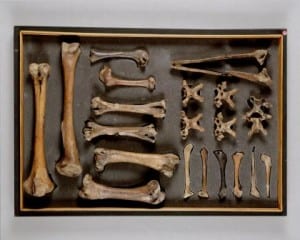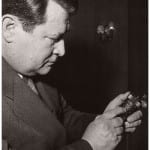Happy 79th Thylacine Day: What they knew in 1896
By Jack Ashby, on 7 September 2015
79 years ago today , on the night of 7th of September 1936, the last known thylacine died of exposure, locked out of the indoor part of its enclosure in a Tasmanian zoo. This followed a government-sponsored cull based on pressure from the farming lobby, who incorrectly blamed the thylacine for the failure of the sheep industry. Happy Thylacine Day.

Thylacine as depicted in J.G. Wood’s The Illustrated Natural History (1872?). Engraved by W. Coleman, after Robert Kretschmer (1865)
Here at the Grant Museum, as holders of a significant collection of specimens, we like to commemorate Thylacine Day. Here you can read how we have commemorated previous Thylacine Days – including the story of their extinction, and how it’s being echoed today in the UK’s unscientific badger cull (which restarted last Friday).
I recently bought book from 1894* – A Handbook to the Marsupialia and Monotremata – a species by species account of what was then known about those groups by Richard Lydekker. Lydekker was a significant figure at the Natural History Museum, London, and incidentally was born about 100m from us here at UCL. Here is what he had to say about thylacines: (more…)
 Close
Close






